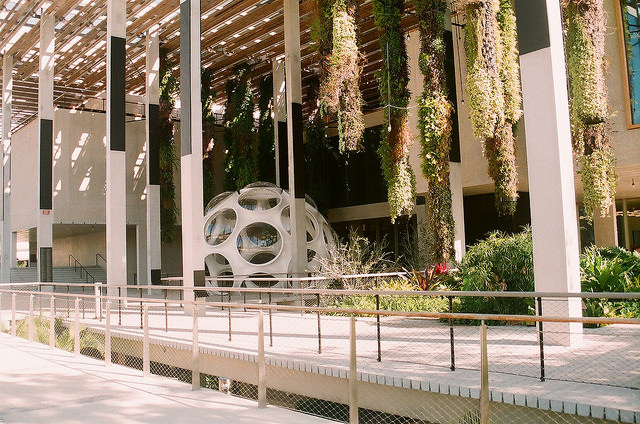
March 15, 2017; New York Times
While many museums offer family-oriented programming, teenagers often are not the target audience for such outreach. Further, as school field trips have decreased with waning budgets and with increased focus on standardized testing, many teens may not have access to or feel welcome in museums. But there’s a growing trend among museum educators to focus on teens and to develop meaningful ways to engage them in the arts and in social issues through museum collections. Now, there’s evidence to demonstrate the lasting impact of such work in shaping the lives of young people, based on a study of four contemporary art museums with teen programs that have been around since the 1990s.
Late in 2016, a report was published on research funded by the federal Institute of Museum and Library Services (IMLS). (It should be noted here that IMLS, like the National Endowment for the Arts and the National Endowment for the Humanities, would be eliminated under the White House’s recently proposed draft federal budget blueprint.) The research report, “Room to Rise: The Lasting Impact of Intensive Teen Programs in Art Museums,” reflects a multi-year collaboration among four contemporary art museums: the Whitney Museum of American Art in New York, the Walker Art Center in Minneapolis, the Contemporary Arts Museum Houston and the Museum of Contemporary Art, Los Angeles. As described on the Whitney’s website:
Each of the participating museums is home to a nationally recognized teen program that has operated continuously since the 1990s. These programs bring highly diverse urban youth together to work collaboratively with museum staff and artists, developing vibrant activities and events to engage teen audiences, from tours and exhibitions to performances and fashion shows.
These are not one-off experiences. The programs studied go deep with relatively small cohorts of teenage participants, typically engaging teens for one to three years and serving one to two dozen students at a time, generally with weekly engagements. Each program has its own local flavor and typically aligns with community needs or social issues. “Room to Rise” is based on online surveys of 264 individuals who participated as teenagers in programs offered by the four institutions from the 1990s through 2011. (The survey was sent to 600 potential respondents.) Focus groups elicited additional information from 18 individuals. The study was inspired in part by a growing body of anecdotal evidence that participants in the four museums’ programs greatly valued those experiences, and in some cases pursued careers in the arts because of them.
Sign up for our free newsletters
Subscribe to NPQ's newsletters to have our top stories delivered directly to your inbox.
By signing up, you agree to our privacy policy and terms of use, and to receive messages from NPQ and our partners.
Lead researcher Mary Ellen Munley notes that a significant majority of those surveyed identified their participation in a museum program “as one of the most important experiences in their lives.” Some participants have pursued careers in the arts, but even those who didn’t said their involvement in those programs as teens helped them to be “open to multiple perspectives, and appreciate that there are many ways to look at the same thing. And not just dismiss something out of hand because you don’t understand it.”
From the report, here are brief descriptions of the teen programs offered at the four institutions:
- Whitney: Youth Insights (created in 1997) offers intensive programs in which teens build sustained relationships with artists, museum staff, and a supportive community of peers while leading tours, planning events, making and creating art, and developing media projects.
- Walker: The centerpiece of teen programs is the Walker Art Center Teen Arts Council (created in 1996), a group of high school student artists and art enthusiasts who meet weekly to design, organize, and market events and programs for their peers and the general public.
- Contemporary Arts Museum Houston: The Teen Council (created in 1999) introduces young people to contemporary art and provides an arts-based incubator for leadership, visual literacy, and life skill development.
- Museum of Contemporary Art, Los Angeles: Teens work with artists, museum professionals, and one another to make art, investigate exhibitions, and plan events.
As noted in the article in the New York Times, other museums around the country have teen-focused programs “that use innovative art concepts to explore challenging ideas” and/or help young people with issues of personal identity. Here are the examples cited:
- Pérez Art Museum Miami offers a program called Art Detectives that brings young people together with police officers and museum staff, studying and making art together while helping to change perceptions of each other as members of the same community.
- Museum of Contemporary Art Denver offers “the Failure Lab, a leadership program for a dozen teenagers that lasts through the school year and gives them an opportunity to put together art shows and work with professional artists,” even as they learn that it’s okay to “fail spectacularly.”
- Minnesota Historical Society has a program called “Wariyaa” specifically for Somali youth. (Minneapolis has the largest Somali refugee population in the U.S.) The nine students selected to participate in the program are working on a Somali cookbook, which will combine recipes with oral history.
- Museum of the City of New York, the Whitney and the Museum of Modern Art in New York all offer programs aimed at lesbian gay, bisexual, and transgender teens.
NPQ would love to hear from its readers about other innovative museum-led programs for teens. Tell us what you’re doing and how long you’ve been at it.—Eileen Cunniffe













